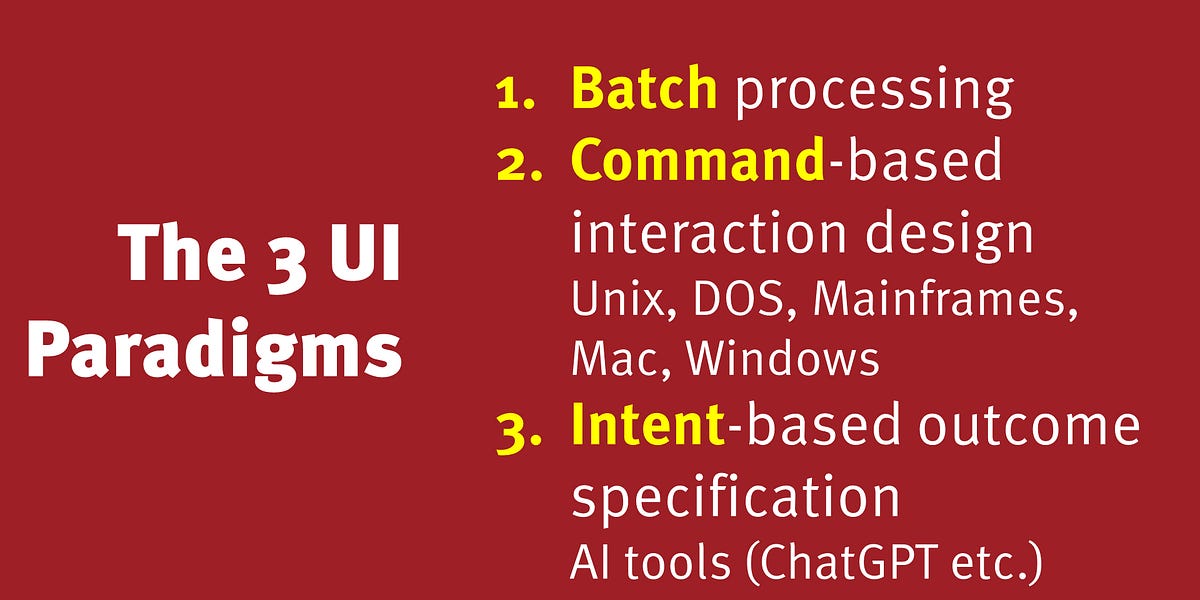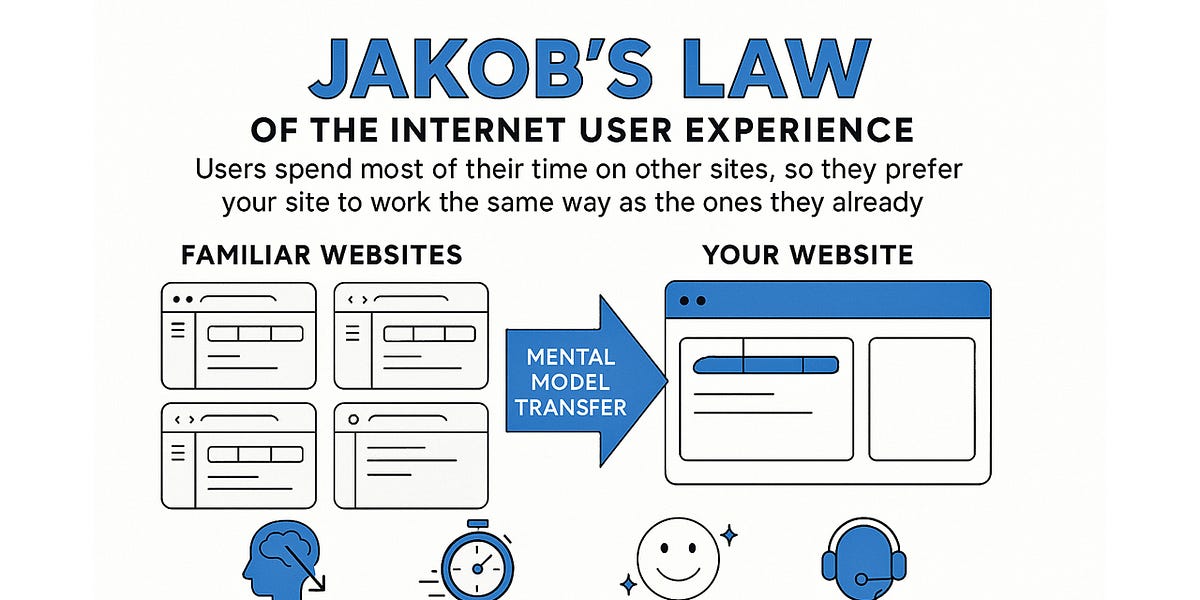Traditional methods for accessibility have been tried for 30 years without substantially improving computer usability for disabled users. It’s time for a change, and AI will soon come to the rescue with the ability to generate a different user interface for every user, optimized for that person’s unique needs.| jakobnielsenphd.substack.com
AI is introducing the third user-interface paradigm in computing history, shifting from command-based interaction to intent-based outcome specification, where users tell the computer what they want, not how to do it, reversing the locus of control.| jakobnielsenphd.substack.com
Summary: Users spend most of their time on other websites, so they expect your site to work like all the other sites they already know. When a design deviates from users’ expectations, usability suffers. Don’t be arrogant and assume that your new design idea is so brilliant that it can overrule decades of user habituation.| jakobnielsenphd.substack.com



